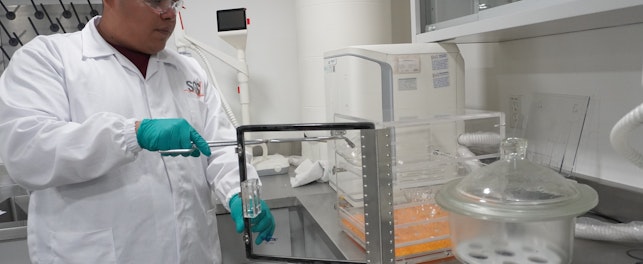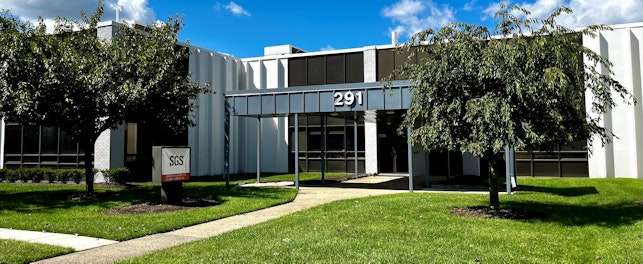As the evenings begin to draw in, many of us are starting to think about the beautiful festive decorations that light our homes and cities during December. Decorative lights are an integral part of Christmas but there is a potential risk if the product is unsafe.
Staying Safe
Despite the uncertainties of 2020, we can be certain that as soon as we reach Thanksgiving, Christmas lights will begin to appear in homes and offices all over the US. While decorative lights are a wonderful addition during the festive period, consumers need to be sure the products they buy are safe.
The National Fire Protection Association (NFPA) states that, on average, US fire departments respond to 160 house fires caused by Christmas trees every year – causing three deaths, fifteen injuries and USD 10 million in damage. Statistically, 44% of these fires relate to electrical distribution or lighting equipment.1
Seasonal lighting products are not inherently dangerous but there are some basic safety rules that users should observe:
- Use the right type of lights – outdoor lights and electrical displays can be used indoors but indoor lights cannot be used outdoors
- Switch lights off at night or when the house is empty
- Do not use lights with frayed wires, missing bulbs, etc.2
Substantial Product Hazard
The US Consumer Product Safety Commission (CPSC) has determined that seasonal and decorative lighting products present a risk of electrical shock or fire if they do not exhibit one or more of the following “readily observable safety characteristics”:
- Minimum wire size
- Sufficient strain relief
- Overcurrent protection
Under section 15(j), the CPSC has the authority to determine a product poses a ‘substantial product hazard’ if it has or does not have certain characteristics. This does not establish a mandatory safety standard for the product, but it does mean the product is subject to reporting requirements under section 15(b) of CPSA 15 U.S.C. 2064(b). If a manufacturer fails to report a ‘substantial product hazard’, they may be subject to civil penalties under section 20 of the CPSA and possible criminal penalties under section 21 of the CPSA 15 U.S.C. 2069, 2070. The product will also be subject to corrective actions under sections 15(c & d) of the CPSA 15 U.S.C. 2064(c & d). The CPSC can order the manufacturer, distributor or retailer to offer repair, replacement or refund of the product.
It should also be noted, consumer products that are deemed a ‘substantial product hazard’ must be refused import admission to the US under section 17(a) of the CPSA. 15 U.S.C. 2066(a).3
UL 588
While the CPSC does not require mandatory testing and certification for seasonal and decorative lighting products, the best way to ensure the three “readily observable safety characteristics” are in place is to ensure conformity to the UL 588 Safety Standard for Seasonal and Holiday Decorative Products. Sections 6, 7, 15, 71, 79 and SB15 of the standard cover minimum wire size, sufficient strain relief, and overcurrent protection (fuses). Compliance with this standard is therefore not mandated for non-commercial settings, but it is advisable since it ensures accordance with the requirements relating to observable safety characteristics.
The standard covers seasonal decorative lighting products and accessories for temporary use – installation and use not exceeding 90 days – with a maximum input voltage rating of 120 V to be used in accordance with the National Electrical Code, ANSI/NFPA 70. They cover factory-assembled lighting strings with push-in, midget-screw, miniature-screw lamp holders, or non-replaceable lamps connected in series for across-the-line use or with candelabra- or intermediate-screw lamp holders connected in parallel for direct-connection use. The standard also covers a variety of other seasonal decorative products, including wreaths, stars and lighting sculptures.
The standard does not cover strings of lights that use lamp holders that are larger than intermediate-screw and non-seasonal products. It also does not apply to portable electric lamps intended for general illumination with a seasonal decoration.
SGS Solutions
SGS offers a range of solutions to help manufacturers, distributors and retailers supply safe electrical products to consumers all over the world. This includes seasonal and holiday decorative lighting products for US consumers.
As we looked at in the last edition of Consumer Compact, the demarcation between a domestic and commercial product is often blurred. A product can be purchased from a high-street store and then used in either setting. If Christmas lights are used in a commercial setting, they must be certified by a Nationally Recognized Testing Laboratory (NRTL) against UL 588.
Even without the requirement for NRTL certification, conformity to UL 588 is advisable for seasonal lighting products because it represents the best way to ensure the three “readily observable safety characteristics” are in place.
As an NRTL, SGS can provide testing and certification services for a wide variety of products that can be used in the commercial environment, including seasonal lights. SGS’s global network of experts and laboratories have the capabilities in place to ensure seasonal lighting products conform to the requirements in UL 588, thereby ensuring only safe and compliant products are delivered onto the US market.
Learn more about our NRTL services.
John Ciliege
Global Head – NTRL
SGS Consumer and Retail Services
t: +1 770-570-1841
References
1 Winter holiday fire facts
2 Home safety tips
3 Seasonal Lighting



